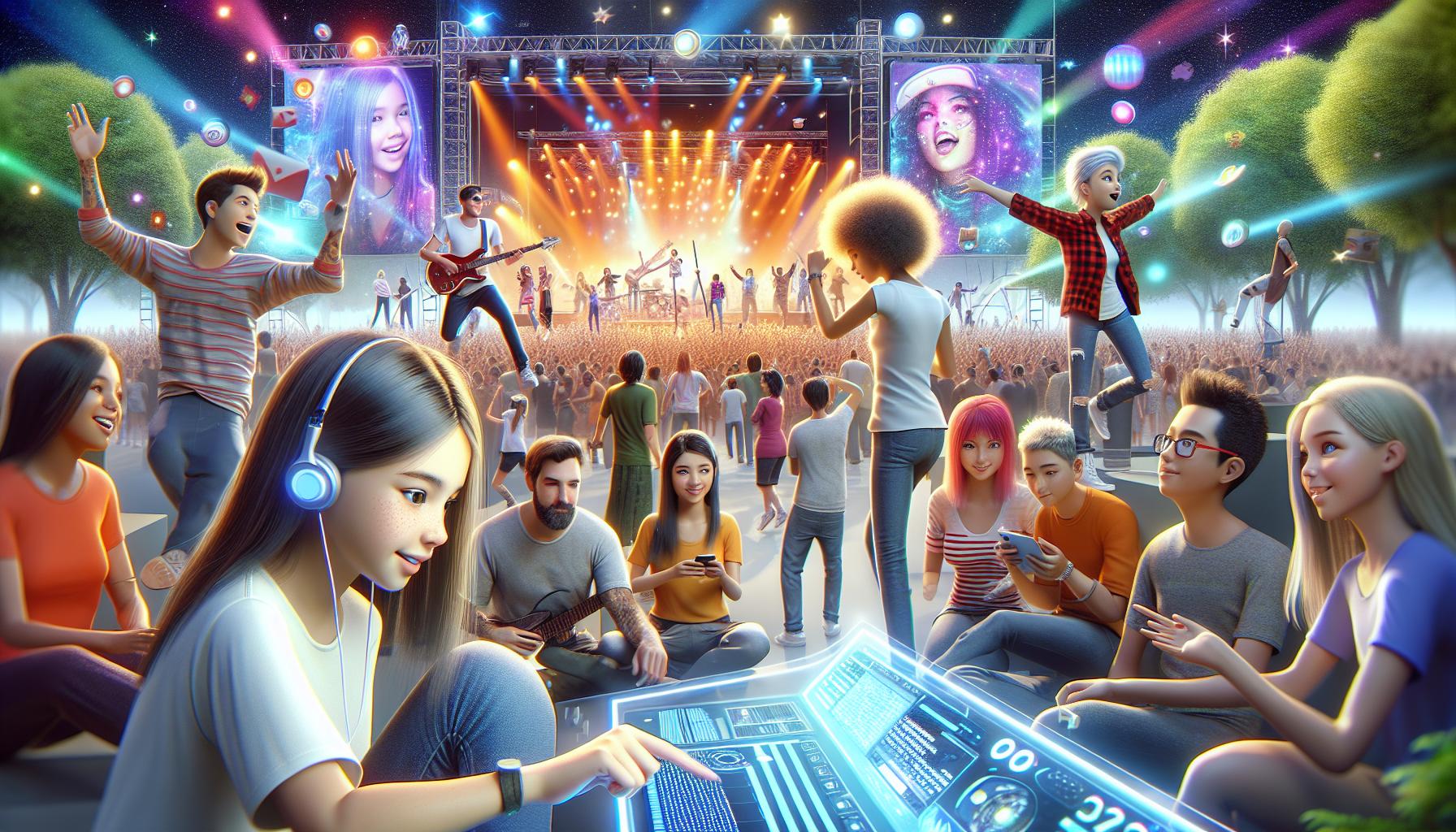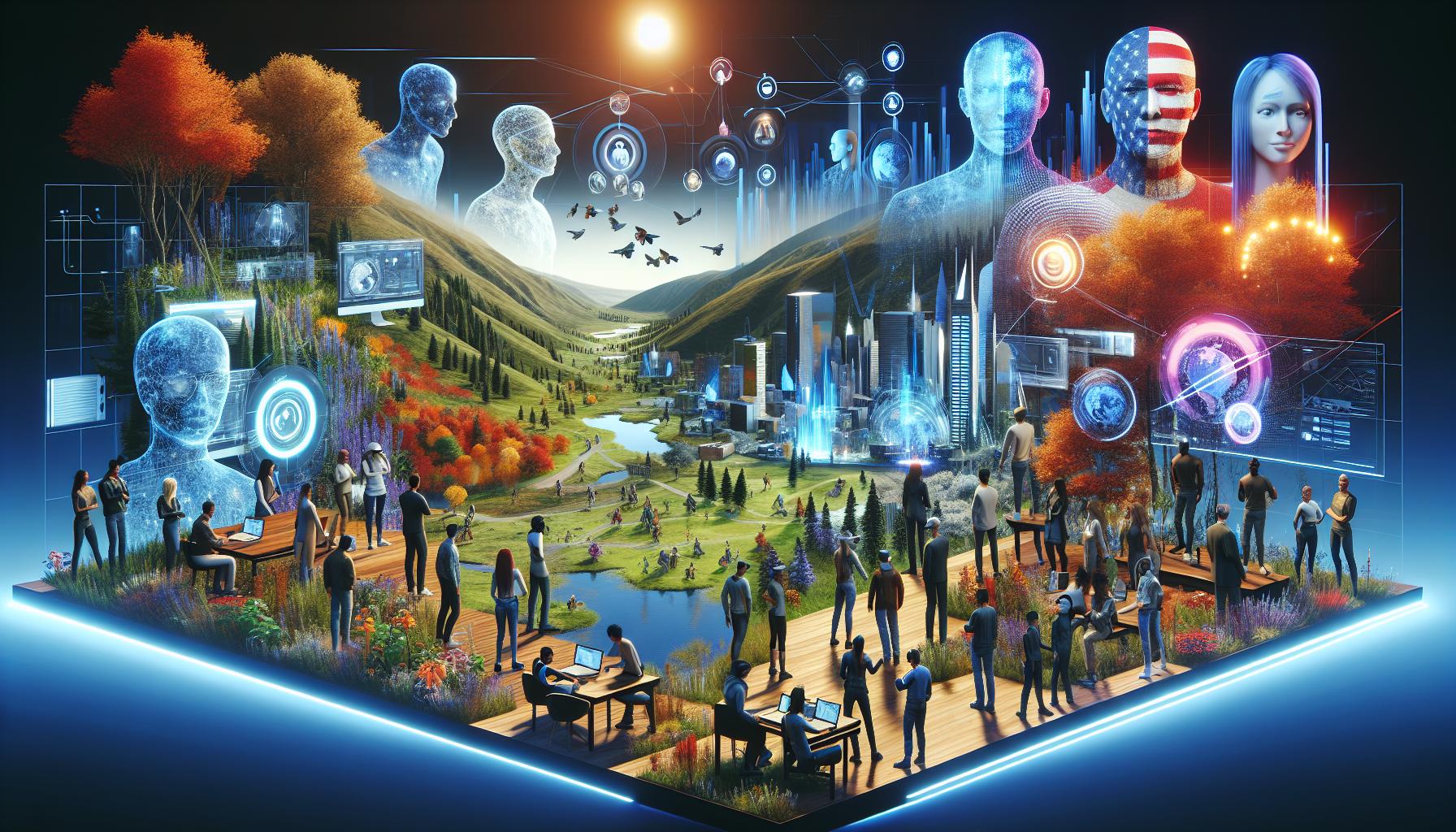Key Takeaways
- Immersive Experiences: Virtual worlds provide engaging, three-dimensional environments that enhance user interaction and exploration.
- User-Generated Content: These platforms allow creators to design their own games and experiences, enriching the community and offering diverse engagement options.
- Social Connectivity: Virtual worlds promote communication and friendship through avatars and interactive features, fostering vibrant online communities.
- Evaluative Criteria: Assessing virtual worlds involves examining user experience, graphics, community interaction, and overall engagement.
- Emerging Technologies: Advancements in AR, VR, AI, and blockchain are transforming virtual worlds, enhancing immersion and introducing digital asset ownership.
- Trends in User Engagement: Gamification and community-driven events are key strategies for improving user participation and collaboration within these digital spaces.
In an era where digital experiences shape social interactions and entertainment, virtual worlds have emerged as vibrant realms for creativity and connection. These immersive environments allow users to escape reality, explore new landscapes, and engage with others in ways that were once unimaginable. From sprawling fantasy landscapes to futuristic cities, the variety of virtual worlds caters to diverse interests and preferences.
As technology advances, the popularity of these digital spaces continues to soar. Gamers, creators, and socializers alike flock to platforms that offer unique experiences and endless possibilities. Whether it’s building a dream home in a sandbox universe or embarking on epic quests with friends, the top virtual worlds provide an engaging backdrop for adventure and collaboration. Discovering the best of these realms can transform how individuals interact and express themselves in the digital age.
Top Virtual Worlds
Virtual worlds serve as expansive environments designed for interaction, exploration, and creativity. These digital realms provide users with opportunities to engage in various activities, ranging from gaming to social networking.
Virtual worlds often feature:
- Immersive Experiences: Users navigate through three-dimensional environments filled with intricate details.
- Social Interaction: Participants connect through avatars, fostering communication and friendships across geographical boundaries.
- User-Generated Content: Creators design their own settings, objects, and experiences, enriching the overall landscape of the virtual world.
- Customization Options: Users personalize avatars and spaces, enhancing individual expression and identity.
- Real-Time Events: Many platforms host live events, such as concerts or gatherings, encouraging active participation.
These characteristics contribute to the increasing appeal of virtual worlds. As technology continues to advance, the possibilities within these spaces expand, attracting diverse user bases eager to connect and create.
Criteria for Evaluation

Evaluating virtual worlds requires a focus on multiple criteria that impact user engagement and overall experience. The following subheadings outline the essential elements to consider.
User Experience
User experience emphasizes the ease and enjoyment of navigation. Engaging interfaces facilitate seamless interactions, while intuitive controls enhance playability. Feedback mechanisms, such as tutorials and prompts, support new users. Additionally, responsiveness influences how quickly users can engage with elements, contributing to the satisfaction of the experience.
Graphics and Design
Graphics and design encompass the visual appeal and aesthetic quality of the environment. Realistic rendering and attention to detail in textures create immersive settings. Cohesive art styles contribute to the overall atmosphere, ensuring that elements fit within the narrative. Performance optimization plays a crucial role, preventing lag and maintaining fluid graphics, which significantly affect player retention.
Community and Social Interaction
Community and social interaction highlight the connectivity of users. Active forums and in-game chat systems promote communication, allowing for collaboration and networking. Events and group activities encourage users to socialize, fostering a sense of belonging. Diverse user-generated content enriches interactions and keeps the community dynamic, creating a vibrant ecosystem within the virtual world.
Top Virtual Worlds

Virtual worlds offer diverse environments that cater to creativity, social interaction, and immersive experiences. Below are three prominent virtual worlds that exemplify these qualities.
Virtual World 1: Overview and Features
Roblox is a platform that enables users to create, share, and play games developed by others. It features an extensive library of user-generated games across genres, from adventure and role-playing to obstacle courses. Players customize their avatars and explore vast virtual landscapes. Key features include:
- User-generated content: Millions of games and experiences created by users expand engagement options.
- Social interaction: In-game chat and friend systems promote connectivity among players.
- Customizable avatars: Users express individuality through various customization options for their characters.
Virtual World 2: Overview and Features
Second Life provides a robust virtual environment where users can create and explore while participating in social interactions and commerce. It features a vast array of virtual spaces, including homes, businesses, and art galleries. Notable features include:
- Real estate options: Users can buy, sell, and rent virtual property within the expansive world.
- Event hosting: Users organize events such as live concerts, art exhibits, and workshops.
- Robust customization: Users can design unique avatars and spaces using an extensive toolkit.
- Block-based construction: Players use blocks to create structures and landscapes, enabling boundless creativity.
- Multiplayer options: Users collaborate in survival or creative modes, enhancing social gameplay.
- Modding community: An active community creates modifications that expand gameplay and introduce new features.
Trends in Virtual Worlds

Virtual worlds continuously evolve, driven by technological advancements and changing user preferences. Key trends shape the future of these immersive spaces, enhancing user interaction and engagement.
Emerging Technologies
Emerging technologies transform virtual worlds significantly. Innovations in augmented reality (AR) and virtual reality (VR) create more immersive experiences. High-definition graphics, advanced physics engines, and real-time rendering enhance visual quality. Artificial intelligence (AI) in these environments improves user interactions, facilitating personalized experiences and dynamic content generation. Blockchain technology introduces digital ownership through non-fungible tokens (NFTs), allowing users to trade virtual assets securely.
Evolving User Engagement
Evolving user engagement strategies enhance participation in virtual worlds. Gamification elements, such as rewards and challenges, motivate users and foster competition. Community-driven events, including workshops and contests, encourage collaboration among participants. Platforms emphasize social features, developing integrated voice and text chat capabilities that improve communication. Analytics tools track user behavior, enabling platforms to customize experiences based on preferences and engagement patterns.

